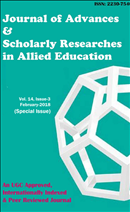A Study on Evaluation in Male Infertility of Genetic Factors Role
Investigating the Impact of Genetic Factors on Male Infertility
Keywords:
male infertility, genetic factors, spermatogenic dysfunction, chromosomal aberrations, azoospermia, oligospermia, severe oligospermia, oligoasthenoteratospermia, mutation screening, correlation studiesAbstract
Male infertility is most obvious examples of a complex disease. Genetic factors of spermatogenic dysfunction, like as chromosomal aberrations, account for 10–15 percent of extreme male infertility, according to many male mouse models, mutation screening, and correlation studies conducted in the last few years. The standard GTG (G-banding Trypsin Giemsa) banding technique was used to determine the chromosomal abnormalities. A total of 68 percent of study participants had azoospermia, 18 percent had oligospermia, 6 percent had severe oligospermia, and 8 percent had oligoasthenoteratospermia (OAT) xvi.Downloads
Download data is not yet available.
Published
2018-02-04
Issue
Section
Articles
How to Cite
[1]
“A Study on Evaluation in Male Infertility of Genetic Factors Role: Investigating the Impact of Genetic Factors on Male Infertility”, JASRAE, vol. 14, no. 3, pp. 587–593, Feb. 2018, Accessed: Jan. 12, 2026. [Online]. Available: https://ignited.in/index.php/jasrae/article/view/7542











